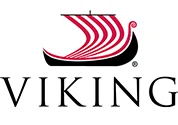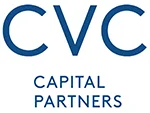 One company’s efforts to label itself as a luxury brand instead of merely an automaker shows how much PR can impact a company’s valuation, and reveals why all brands should monitor traditional and digital media channels to determine what’s being said about them and how they are being perceived.
One company’s efforts to label itself as a luxury brand instead of merely an automaker shows how much PR can impact a company’s valuation, and reveals why all brands should monitor traditional and digital media channels to determine what’s being said about them and how they are being perceived.
Ferrari is an automaker, right? Not if you ask them. It sees itself more as Louis Vuitton than Ford, Chrysler or Lexus. From Ferrari’s perspective, it doesn’t manufacture and sell automobiles, it provides a luxury, high-end product that most will only dream of owning.
The company seems to have held this perspective since Enzo Ferrari began manufacturing racecars in 1929. It has come to the fore, though, as Fiat Chrysler moves to spin off 10% of the brand into an IPO worth billions.
Just how many billions depends largely on the lens used to view Ferrari’s brand.
Whether it’s a restaurant, automaker or anything in between, how we perceive our own brand may differ from how investors and consumers classify it. This has pitfall potential, especially for communicators, but it can be overcome. Just look at Ferrari. When it comes to converting dissenters, it appears headed down the right road.
Because of his view that Ferrari is a luxury brand, FCA Chief Executive Sergio Marchionne, who assumes the role of Ferrari Chairman this fall, argues Ferrari’s stock is worth €10-11 billion (U.S. $11.1-12.2 billion).
A valuation comparing Ferrari to other carmakers produced an estimate about half of Marchionne’s number. The company had profits of about $290 million in 2014, according to The New York Times.
When all is said and done, the $5 billion difference may come down to PR, as it plays a significant role in valuation, not just during the IPO but every day in the life of a publicly traded company.
From a corporation embarking on an IPO to a mom-and-pop shop with no Wall Street ambitions, all businesses these days are publicly traded in a sense. A good or bad day in traditional or digital news sways public opinion and, ultimately, the future of your brand.
Ferrari’s strategy entering its IPO holds lessons for all businesses.
Project and protect
The success of a company’s IPO depends largely on how it sells compared to benchmark companies.
According to Marchionne, Ferrari intends to build “a business that is fully fledged on its own merits, that can be compared to other luxury goods-makers outside of carmaking.”
But does its possible plans to produce a less expensive model (€100,000) and gradually increase production to 10,000 vehicles per year — a nearly 50% bump from the 7,000 cap former Ferrari Chairman Luca Cordero di Montezemolo set — contradict this?
Those proposals have already rankled some Ferrari owners who feel an uptick in production and a drop in price will reduce exclusivity and diminish desire for the brand, which had nine of the 10 most expensive classic cars sold at auction in 2014, including one reaching $38 million.
Ferrari has long leveraged exclusivity to drive a higher gross margin than other automakers, though it likely falls well short of the margins produced on Louis Vuitton handbags.
The company said its projected course still protects the Ferrari brand: “We pursue a low volume production strategy in order to maintain a reputation of exclusivity and scarcity among purchasers of our cars and deliberately monitor and maintain our production volumes and delivery wait-times to promote this reputation.”
Adding in another interview, “How many handbags do Louis Vuitton and Chanel sell? As Ferrari’s bosses have said, if you sell one less than the market wants, you’re still exclusive.”
That’s key communication and a good public relations move for the brand. Scarcity, rarity, expertise and excellence are key components to luxury brands. (If played strategically, those components also benefit “everyday brands.”)
Ferrari hasn’t wavered from its promise of exclusivity. By incorporating it consistently into its communication, Ferrari reassures rankled owners and shows investors the brand will retain its mystique, respect fandom and protect investments.
In addition to more cars on the road, Ferrari has promised to “selectively expand the presence of the Ferrari brand in attractive and growing lifestyle categories.” According to Ian Fletcher, principal analyst at IHS automotive, the brand is licensing everything from key rings to theme parks.
Considering this direction, the public relations team needs to stay vigilant. Ferrari projects a great image and must protect it. A knockoff Ferrari Testarossa is nearly impossible to recreate, but luggage and clothing with a Ferrari logo can appear on any street corner.
It’s not just merchandise. Ferrari and every other brand needs to monitor traditional and digital channels to determine how people perceive their brand and what they broadcast about it.
Stay active when quiet
Due to federal regulations, brands are forced to go silent before their IPOs to prevent the artificial inflation of their stock’s value. During this time, they can’t discuss new deals, personnel changes, enhancements to products and more.
The quiet period extends beyond the first day of trading, and Ferrari’s communication team will likely use this time to refine its strategy for when the gag order is lifted.
The key for any brand, whether in forced silence or not, is to look to competitors and even others outside its industry to see how they succeeded or fell short.
For example, Ferrari has compared itself to Louis Vuitton, a publicly traded company, often. It wouldn’t hurt for them to look at how Louis Vuitton projects its image and how it handled its own IPO.
Once the quiet period ends, Ferrari will have to protect its status as a luxury brand. Valuation isn’t a one-time event, it happens every moment and will never stop.
Whether or not your company has IPO ambitions doesn’t excuse you from facing the same challenges as Ferrari. Communicating with messaging that helps consumers and partners see our brands for the images we want to project is a challenge all communicators face.
Wise communicators, though, look outside their walls and see how they can use the successes or failures of others to positively impact their brand.
* * *
Mark Thabit is CMO of Cision.


 Edelman handles Viking Holdings, the river and ocean luxury cruise line that plans to raise $1B via an IPO priced in the $21 to $25 per share range.
Edelman handles Viking Holdings, the river and ocean luxury cruise line that plans to raise $1B via an IPO priced in the $21 to $25 per share range. Teneo is handling the initial public offering of CVC Capital Partners, one of Europe’s largest private equity firms with nearly $200B in assets under management.
Teneo is handling the initial public offering of CVC Capital Partners, one of Europe’s largest private equity firms with nearly $200B in assets under management. Brunswick Group represents Endeavor Group Holdings as it agrees to go private via its acquisition by Silver Lake technology investment firm, which is handled by Edelman Smithfield.
Brunswick Group represents Endeavor Group Holdings as it agrees to go private via its acquisition by Silver Lake technology investment firm, which is handled by Edelman Smithfield. Tod Donhauser, a nine-year veteran of Edelman, has joined H/Advisors Abernathy as managing director and head of its San Francisco office.
Tod Donhauser, a nine-year veteran of Edelman, has joined H/Advisors Abernathy as managing director and head of its San Francisco office. Intelligent Group Ltd, a Hong Kong-based financial PR firm, has priced its initial public offering of 1.9M shares at $4, which is the low end of the $4 to $5 range.
Intelligent Group Ltd, a Hong Kong-based financial PR firm, has priced its initial public offering of 1.9M shares at $4, which is the low end of the $4 to $5 range.


 Have a comment? Send it to
Have a comment? Send it to 
No comments have been submitted for this story yet.